The 1970s morning routine feels like a different world compared to today’s dawn rituals. Before smartphones, streaming services, and the constant connectivity we now take for granted, mornings had their own unique rhythm and traditions. Some elements of that bygone era have vanished so completely that describing them to younger generations almost sounds like fiction. Let’s take a nostalgic journey back to those simpler sunrise hours and rediscover what’s been lost to time.
1. Physical Newspapers with Breakfast

The rhythmic thud of the morning newspaper hitting the driveway or porch was once as reliable as the sunrise itself. Families would gather around the breakfast table, passing sections back and forth while discussing the day’s headlines. Dad might claim the front page and sports, Mom often took the lifestyle section, and kids fought over the comics. The physical act of turning those large, unwieldy pages while trying not to spill your orange juice was practically an Olympic sport. If anyone was already yearning to bring this back, Partner Press has a rundown of the many benefits to reading physical newspapers instead of any alternative.
Today’s morning news consumption happens through endless scrolling on digital devices, with algorithms determining what we see rather than editors. The shared experience of discussing the same community news has largely disappeared, replaced by personalized feeds that create individual information bubbles. The tactile experience of newsprint on fingertips and the satisfying rustle of turning pages has been sacrificed for convenience and immediacy.
2. Morning TV Programming That Actually Ended
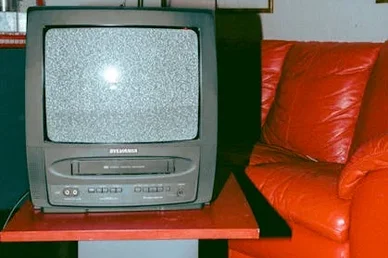
Before 24-hour broadcasting became standard, many television stations actually went off the air overnight, returning with specific morning programming blocks. Americans would wake to test patterns or color bars followed by the national anthem, then morning shows with distinctly local flavors. The Today Show and Good Morning America were already fixtures, but they shared space with local personalities who knew your town and its concerns. When things ended, Remind reminisces, things like the Pledge of Allegiance would fill in the space.
The idea of television having a defined beginning to its day has completely vanished in our always-on world. Streaming services have eliminated the concept of “morning television” altogether, replacing it with content that’s perpetually available. The shared cultural touchstone of everyone in town watching the same morning weather report or local interest stories has disappeared, along with the sense that media observed the same rhythms of daily life that humans do.
3. Writing Checks for the Milkman
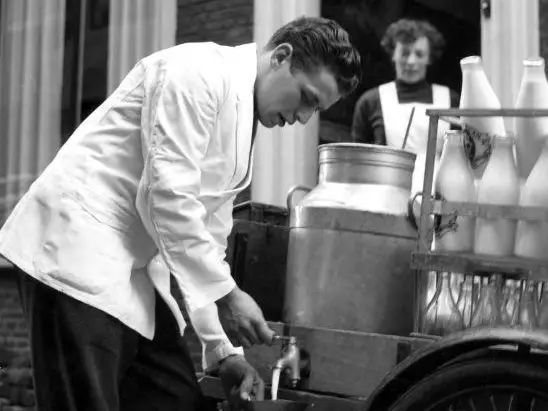
Home milk delivery was still common in many American neighborhoods throughout the 1970s, with glass bottles left in insulated boxes on porches or doorsteps. Families would leave payment—often in the form of checks or cash in an envelope—for the milkman to collect along with empty bottles. This system operated on remarkable trust; money was left outside with the simple expectation that your milk would continue to arrive. Times News Online reports that some places still have this practice, so this morning routine may still be alive and well in parts of the country.
This practice has almost completely disappeared, replaced by weekly grocery store trips or online delivery services. The personal relationship with a service provider who knew your family’s preferences and might even notice if something seemed amiss has been lost. Also gone is the distinctive sound of glass milk bottles clinking together at dawn—a sound that once served as an informal alarm clock for many neighborhoods.
4. Percolating Coffee on the Stovetop
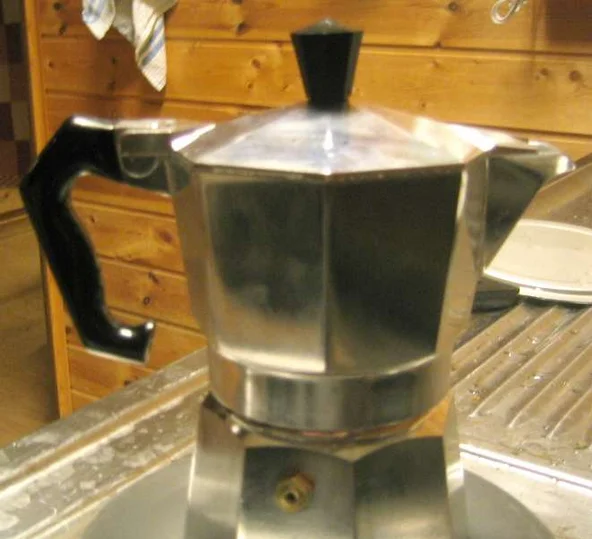
Before programmable coffee makers and single-serve pods, the morning coffee ritual involved percolators bubbling away on stovetops across America. The distinctive gurgling sound and aroma filling the house served as a sensory alarm clock. Making coffee was an active process requiring attention and judgment rather than the push-button convenience we now expect.
Today’s automated brewing systems have eliminated the hands-on relationship with morning coffee preparation. The visual satisfaction of watching coffee bubble through the glass knob on top of the percolator and the ritual of measuring grounds into the metal basket have been engineered away. What was once a mindful morning ritual has become just another automated convenience that demands nothing from us but pushing a button.
5. Balancing Checkbooks at the Breakfast Table

For many adults in the ’70s, the morning routine included updating the family checkbook, recording recent purchases, and calculating the current balance. This financial housekeeping often happened at the breakfast table with paper registers and calculators, sometimes accompanied by bill sorting and envelope addressing. Children absorbed financial literacy simply by witnessing this regular accounting ritual.
Digital banking and automated payments have completely eliminated this practice, along with the regular awareness of spending it created. While certainly more convenient, the disappearance of this ritual has removed a daily connection with personal finances. The tangible reminder of one’s financial situation has been replaced by abstract numbers in an app that many people check far less frequently than their parents consulted those paper registers.
6. Morning Radio DJs as Local Celebrities

Local radio personalities were essential companions during ’70s morning routines, offering a mix of music, news, weather, and banter specifically tailored to your community. These DJs achieved genuine local celebrity status, hosting events and becoming familiar voices that many people felt genuine connections with. Their shows reflected the community’s values and interests in ways national programming never could.
Streaming services, podcasts, and consolidated radio ownership have largely eliminated these local morning shows. The personalized playlists we now prefer during our commutes may match our musical tastes perfectly, but they’ve eliminated the shared cultural experience of an entire community listening to the same songs and jokes. The distinctly local flavor these personalities brought to mornings has been homogenized out of existence.
7. Ironing Clothes Every Single Morning
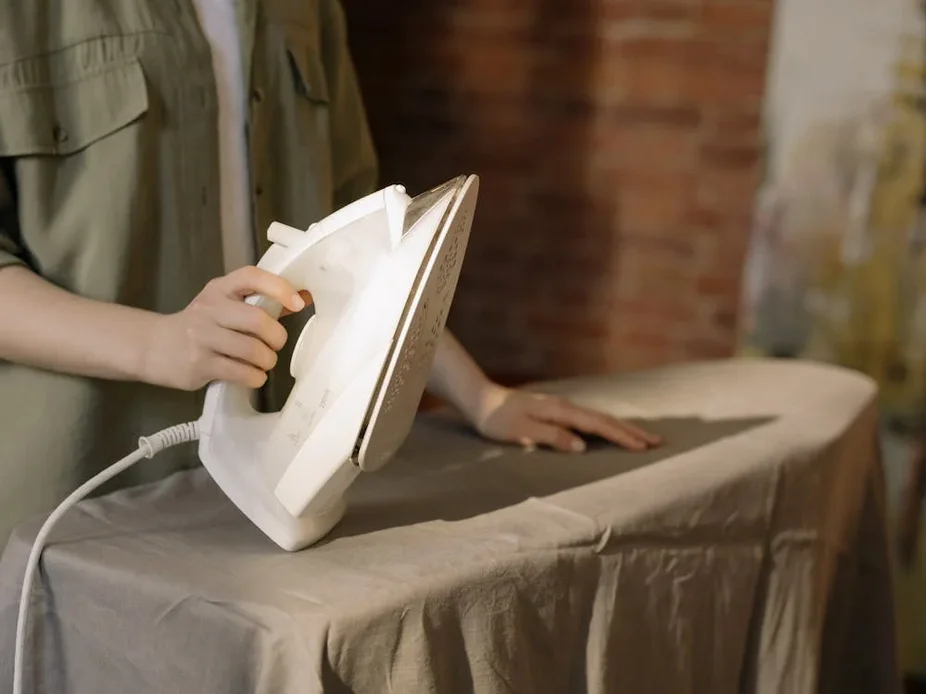
Daily ironing was once a non-negotiable part of preparing for the day, with permanent press fabrics still rare and wrinkle-free clothing almost nonexistent. In many households, the ironing board came out every morning as parents pressed shirts, dresses, and even children’s school clothes. The hiss of steam and the distinctive smell of hot cotton were sensory hallmarks of mornings across America.
Modern fabrics, casual workplace standards, and the invention of wrinkle-release sprays have rendered daily ironing obsolete for most Americans. While certainly a time-saver, the disappearance of this ritual has eliminated what was often a contemplative moment in the day—a few minutes of focused attention on a repetitive task that sometimes provided valuable thinking time before facing the world.
8. Children Walking to School Unsupervised

In the ’70s, the morning exodus of children walking or biking to school without adult supervision was a standard part of neighborhood rhythms. Parents would send kids off with lunch boxes and backpacks, expecting them to navigate crosswalks, traffic, and social dynamics entirely on their own. This independence was considered normal development rather than parental negligence.
Today’s morning routines more likely involve carefully orchestrated carpool lanes or parents accompanying children to bus stops. The spontaneous kid-organized groups walking together and the freedom to take detours or explore have been replaced by structured, supervised journeys. While safety concerns are understandable, something has been lost in terms of childhood autonomy and neighborhood community.
9. Reading Instruction Manuals Over Breakfast
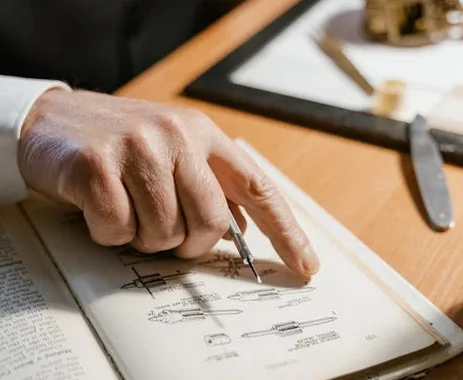
New purchases in the ’70s required actual reading of printed instruction manuals, and mornings often found family members poring over these documents at the breakfast table. Whether it was a new appliance, camera, or toy, understanding how things worked required dedicated time with often poorly translated instructions and diagrams. This learning process was accepted as necessary for modern life.
The “unboxing and using immediately” expectation of today’s products has eliminated this ritual entirely. Intuitive interfaces, online tutorials, and the general impatience with reading instructions have changed our relationship with new possessions. While certainly more efficient, we’ve lost the deeper understanding of how our devices actually function that came from those morning manual-reading sessions.
10. TV and Radio Sign-Off Messages Before School
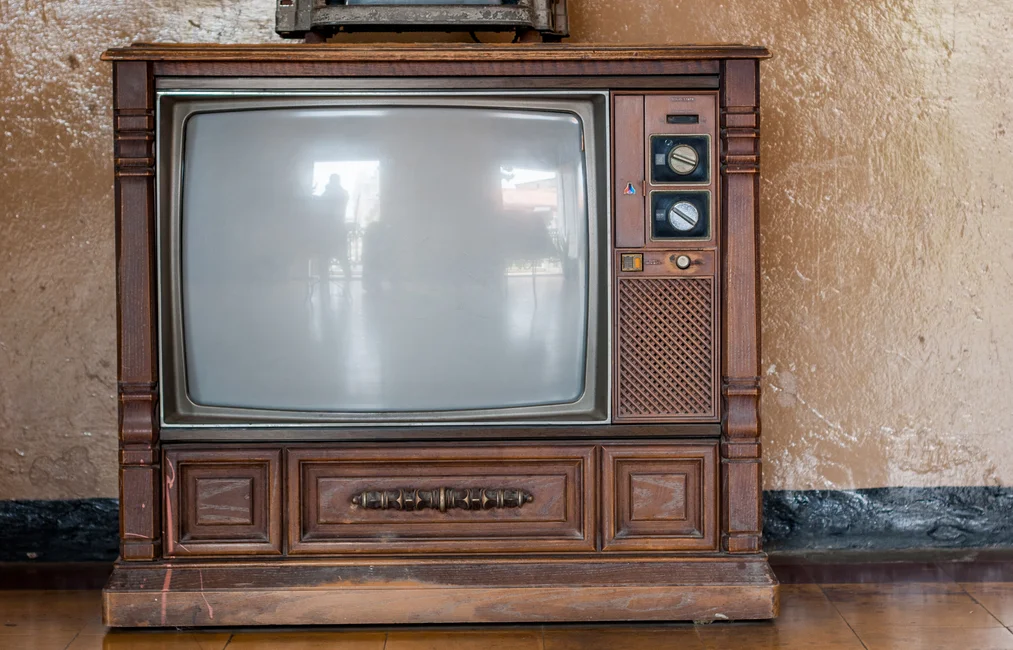
Morning educational programming often ended with specific sign-off messages directed at children, reminding them it was time to leave for school. These gentle transitions—”And now it’s time for all good boys and girls to grab their lunch boxes and head to school”—served as timekeeping rituals for families without constant digital clocks and smartphone alerts.
Today’s continuous content streams provide no natural transitions or endpoint cues. The structured rhythm these messages created has been replaced by parental reminders and alarms. The shared cultural experience of all children in a community receiving the same gentle nudge toward responsibility has disappeared, replaced by individualized notification systems.
11. Encyclopedia Browsing for Homework Help

Many ’70s breakfast tables featured children frantically finishing homework with a volume of the family encyclopedia open beside their cereal bowl. These massive books were significant investments for middle-class families and served as the primary reference source for school reports and general knowledge. Morning cramming often involved rapidly flipping through alphabetized volumes hoping for relevant information.
Internet search engines have completely eliminated this practice, along with the serendipitous discoveries that often happened when browsing adjacent encyclopedia entries. The physical limitation of information accessibility created a different relationship with knowledge—one that required planning and sometimes led to unexpected learning when the volume you needed contained fascinating unrelated entries.
12. Tuning Television Sets By Hand

Morning television often began with someone physically adjusting television dials and antennas to optimize reception. Fine-tuning horizontal hold, contrast, and brightness were regular rituals, sometimes requiring the involvement of multiple family members (“Hold the antenna right there—perfect!”). The TV wasn’t simply turned on; it was calibrated for viewing each morning.
Digital signals and smart TVs have eliminated this interactive relationship with our most important household appliance. While certainly more convenient, the disappearance of this ritual has removed what was often a family’s first collaborative problem-solving activity of the day. Children no longer learn the technical basics of how images reach their screens through this hands-on experience.
13. Smoking at the Breakfast Table

Perhaps the most dramatic change in American morning routines has been the disappearance of cigarettes with breakfast. In the 1970s, many adults considered morning coffee incomplete without a cigarette, regardless of children’s presence. Ashtrays were standard table settings, and the distinctive smell of tobacco mixed with breakfast foods and coffee was simply part of the sensory landscape of mornings.
Health awareness has completely transformed this once-common practice, making it nearly unimaginable today. While unquestionably a positive change for public health, this shift represents how dramatically social norms can transform within a single generation. What was once considered perfectly acceptable adult behavior is now viewed as almost shockingly inappropriate.
The morning routines of the 1970s reflect a world with different technology, different social norms, and different expectations about time and connection. While few would argue for the return of breakfast cigarettes or daily ironing, there’s a certain nostalgia for the tactile, community-oriented rituals that once started our days. As we continue streamlining our mornings for maximum efficiency, perhaps there’s value in considering what connections—to our communities, our possessions, and even our family members—might be worth preserving in our rush toward convenience.


